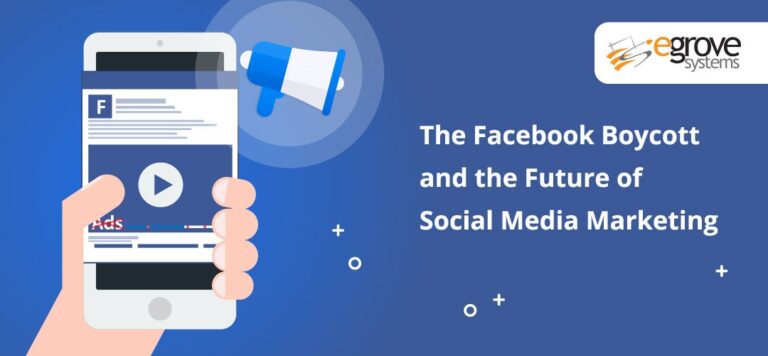Digital Marketing Trends changes fast: Are you keeping up with the latest trends?
Since the year started, Facebook’s user stats took a dive, Snapchat posted a $1.3 billion loss, and Spotify, a dark horse in the digital marketing game, announced its IPO. All the trends we predicted early in the year are being tested, and some digital marketing trends with staying power are becoming very clear. In short: hyper-targeting, transparency, and video are in; fake news, big influencers, and collecting customer data is out.
These are the top five big digital marketing trends to watch for in 2018.
Micro-influencers boost brand transparency
Influencer marketing has been a trend for a while and 2018 is no different. One of the newer insights driving digital marketing strategy, however, is the increased desire for transparency. What does transparency mean? Basically, there’s a growing fatigue in advertising claims: customers are starting to recognize that so-called “CSR” initiatives mostly just pay lip service to a charitable cause, while making little impact. Distrust is growing among consumer groups who see brands as taking advantage of causes for profit.
Millennials started this trend, and other generations are catching on. In North America, a recent survey found that 82% of consumers trust recommendations from sources they know. Only 42% trusted ads on social media networks. As a result, more brands are turning to influencers to become that trusted source of recommendation for customers. In the past, influencer marketing has delivered 11 times higher ROI than than other digital marketing campaigns.
As customers get more savvy, influencer marketing can be a huge boost for transparency. The trend for 2018 is to shift toward “micro-influencers,” social media users whose follower count is less than 10,000. Smaller follower counts can be an indicator that a micro-influencer is more in touch with a close knit community, can manage more one-on-one dialogue with their followers, and is more trustworthy than someone with a massive following. Bigger influencers usually become brands of their own, decreasing the impact of their endorsements and recommendations.
The rise of video continues
Video has started to dominate Digital marketing in recent years, and this trend will continue into 2018. Consider this: YouTube users consume one billion hours of video each day. On Facebook, users are watching over 8 billion videos. That’s a ton of video content.
Video content has the reputation among digital marketers for being expensive and time-consuming to produce. However, tools like Insta Stories and Snapchat (and even Facebook has a live video tool). Instagram boasts 300 million daily users for their Stories, and tools like the swipe up to shop and geotags help keep content relevant and connected to a CTA. Live video also helps boost transparency, as users get to see whatever you share without edits, filters, or script. Combined with micro-influencer marketing, video can be a digital marketing tool to increase a brand’s transparency.
Consumer privacy gets new life
In 2018, transparency is not a two way street. With the Cambridge Analytica revelations and new GDPR regulations in the EU, customer privacy is becoming more and more nonnegotiable. In one survey, more than 60% of respondents reported they don’t trust brands to handle their personal information appropriately. Companies will be forced to reevaluate how they store customer data due to the General Data Protection Regulation affecting every company that does business in the EU. The Cambridge Analytica fallout continues to have significant repercussions for companies looking to use customer information for hyper-targeted digital marketing campaigns.
How will customer privacy concerns drive digital marketing trends in 2018? It’s not clear yet what policy restrictions Congress will pass as a result of Cambridge Analytica. But it all ties back to transparency: customers want digital marketing to be honest, truthful, and minimize the possibility for spreading misinformation.
Chatbots and AI meet consumer demand for instant service
AI is more than just a fun party trick: it’s a digital marketing trend that delivers faster, better customer service. Whether you deploy AI as augmented reality or chatbots, artificial intelligence is turbo-charging digital marketing campaigns online and offline. Chatbots help customers get quick answers to FAQs and improve the overall online experience. AI can inform content marketing, giving brands the power to personalize content on a new level. And, tools like Amazon Alexa and Siri offer new touchpoints for consumers to connect with a brand at any moment. Instant service is becoming truly instant with this year’s AI trend.
Social platforms emphasis mobile and local advertising
This year, think small. And by small, we mean local, micro-targeted, and personal. Digital marketing is getting hyper-specific with micro-influencers and new platforms that make it easy for small businesses to compete with big brands. Facebook Local and Google Posts are two examples of ways that platforms are letting ads get uber-specific. Coupled with a location-specific trend is the desire for mobility. Now, your Digital Marketing Toolkit should include geolocation-based texting, or deals and discounts based on geofencing. Mobile is no longer an afterthought: it should present front and center to your digital marketing strategy.







